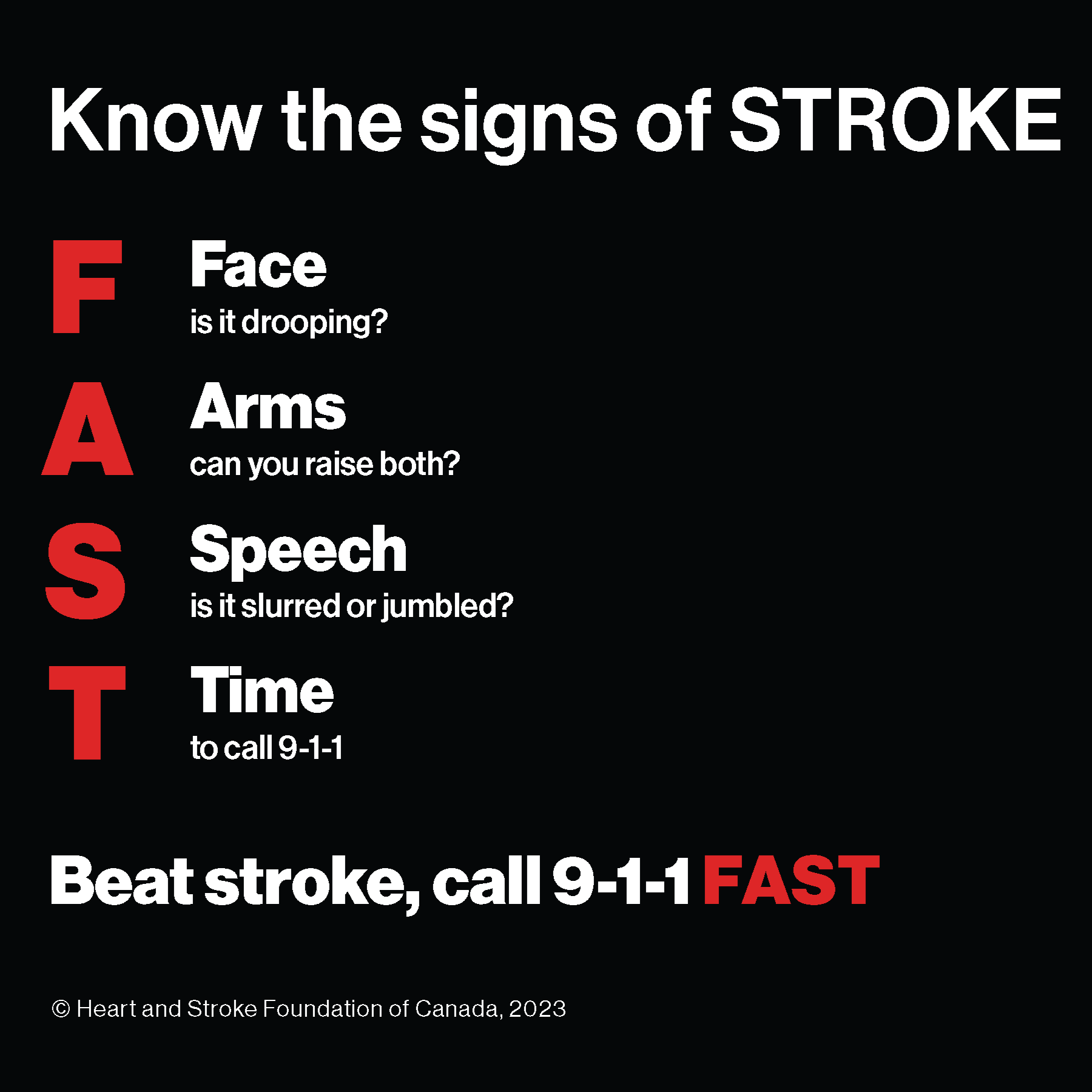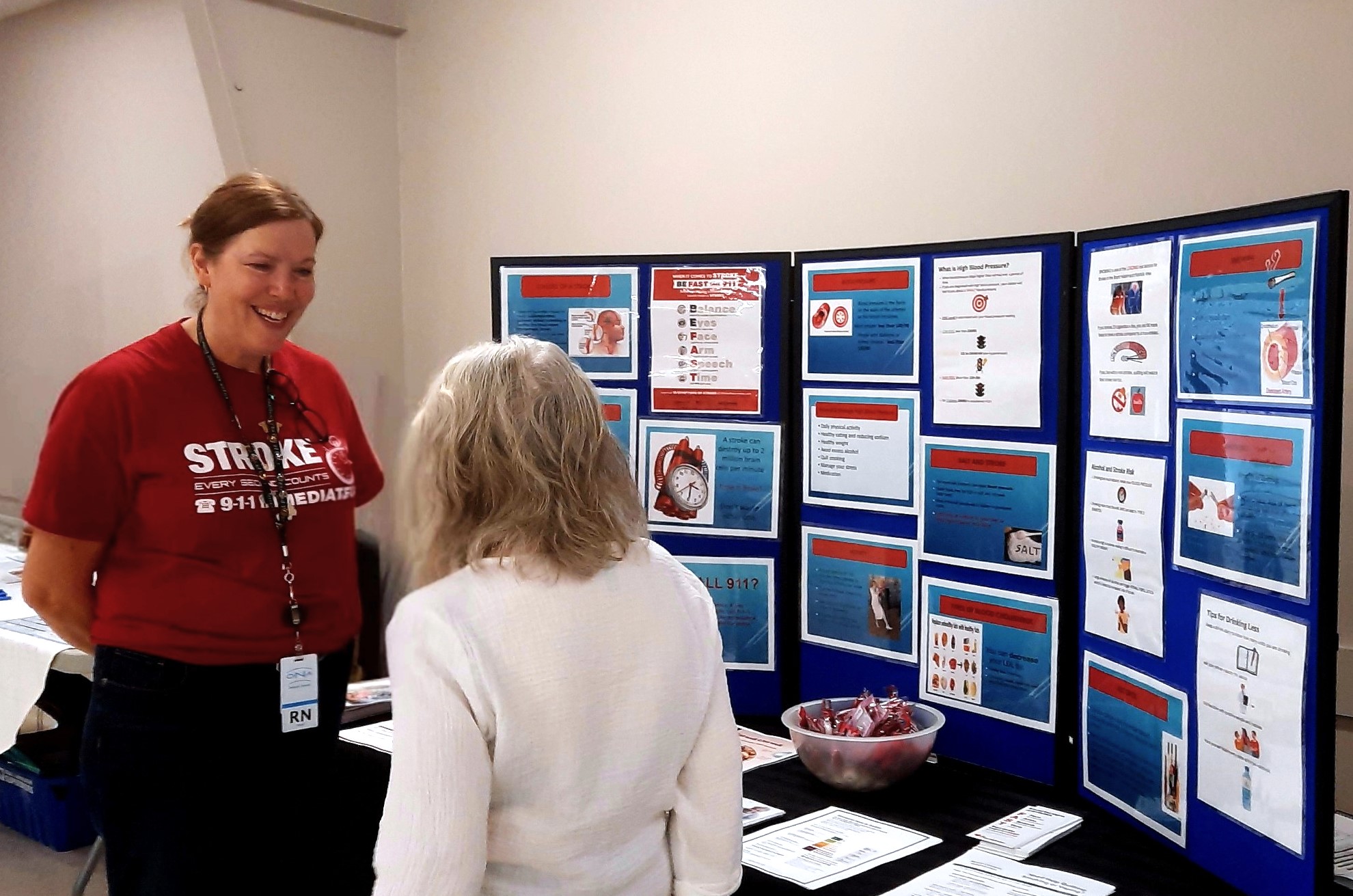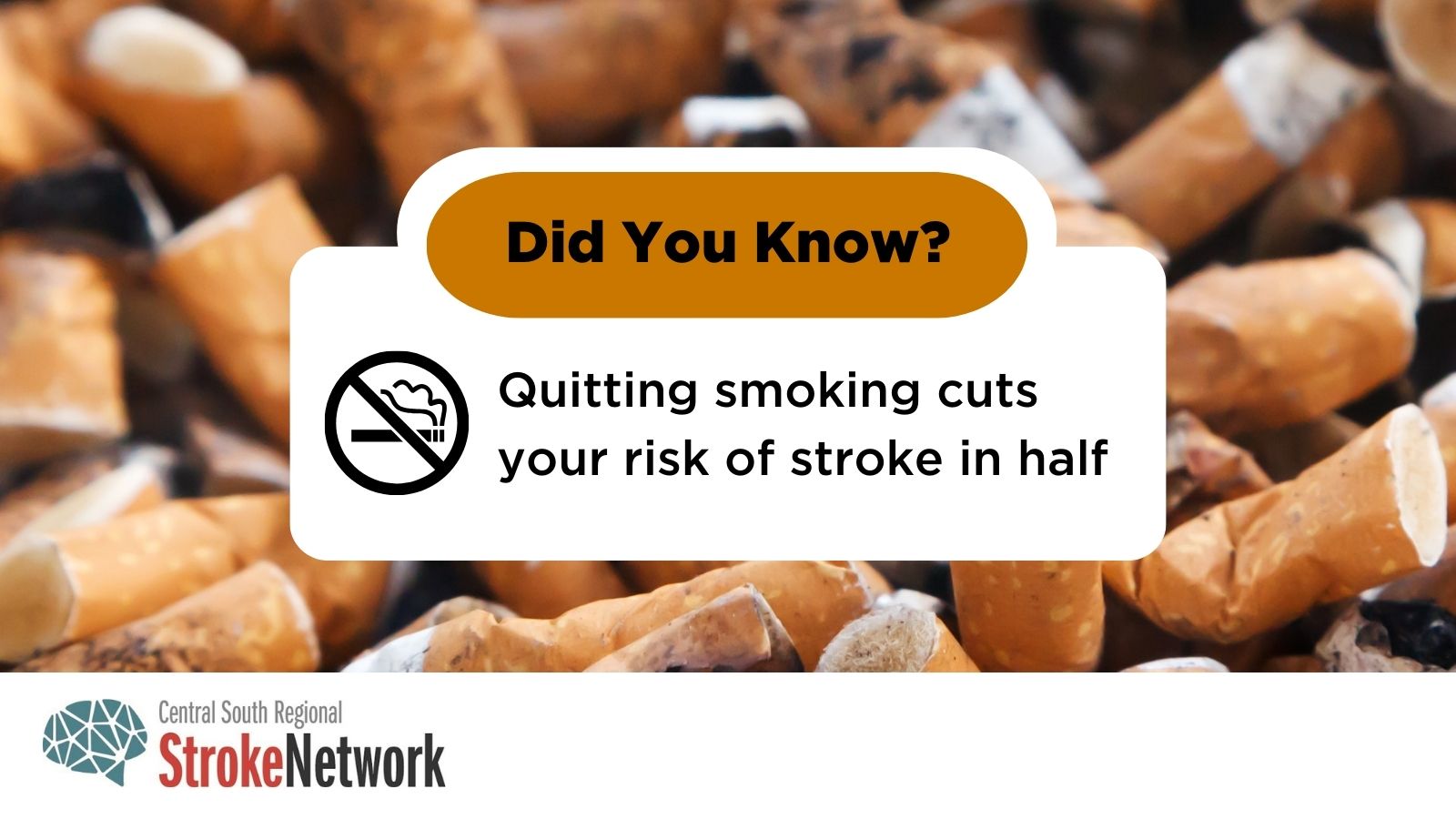World Stroke Day 2024
This World Stroke Day (October 29), we are taking the opportunity to share the importance of acting FAST to spot the signs of stroke.
You may have seen this acronym before and thought why does this matter to me? I’m young, healthy, and not likely to experience a stroke.

But stroke education is not just for people who may experience it, but also to recognize when someone around you may need help.
“People who are having a stroke are not usually aware of what’s happening or able to recognize the signs within themselves – even if they knew the signs of FAST beforehand” says Joanne DeVries, RN in the Stroke Prevention Clinic.
That’s why it’s so important for everyone, including children, to know and be able to recognize the signs. They may need to identify it in a loved one or stranger.
If someone is experiencing FAST stroke symptoms calling 9-1-1 could save their life
“Stroke is a medical emergency. By calling 9-1-1 the care will start right away” says Candace Coe, District Stroke Coordinator.
Emergency Medical Services (EMS) can start providing care while you’re in the ambulance and call ahead to the District Stroke Centre (Brantford General Hospital) to let the emergency team know a person with stroke is on their way.
Specialized stroke care in the district is provided at the Brantford General Hospital (BGH) where the person with stroke can receive access to hyperacute treatments such as the clot busting medication (Alteplase (tPA)), and transfer for endovascular treatment (EVT). The Integrated Stroke Unit at the hospital provides rehabilitation for those recovering from stroke.
What can I control to reduce my risk of stroke?
1. Knowing Your Blood Pressure
Hypertension, also known as high blood pressure, is the number one silent risk factor when it comes to stroke because you don’t always get signs and symptoms beforehand.
Everyone, no matter what age or how healthy they think they are, should know how to check their blood pressure.
Tips for checking your blood pressure:
- Do not take your blood pressure until at least two hours after having a meal, and one hour after drinking caffeine or smoking.
- Do not take your blood pressure until at least 30 minutes after exercising.
- Always rest for a minimum of 5 minutes before taking your blood pressure. This includes not talking and calming yourself in a distraction-free environment.
- Be in a seated position with your back supported and bare arm exposed.
- Always check twice. The second result is more accurate than the first.
Ideally blood pressure should be below 140/90 mmHg or 130/80 mmHg if you are diabetic.
It is strongly recommended that you take a moment once a year to have your blood pressure checked. To test your blood pressure, you could go to a pharmacy, grocery store, family doctor, or check it at home.
Click here for more information from Hypertension Canada.

2. Diet – Eating a balanced diet
Fill ½ your plate with vegetables, ¼ plate with whole grains, the last ¼ with protein such as fish, lean meats or eggs. Have a glass of water and fruit to complete your meals. Reduce the amount of processed and pre-packaged foods as they can be high in fat and salt. Read the food labels at the grocery store and choose the less salty lower fat option.
Click here for more information from the Government of Canada.
3. Smoking – Cutting back can make a difference

Why does smoking increase your chance of stroke by 5 times? The answer: smoking makes your blood thick and your blood vessels contract so that you are more likely to suffer from a blood clot.
Quitting smoking is difficult but there are resources and supports to help you. Cutting back and reducing how much you smoke can be the first step in reducing your stroke risk.
A few suggested resources include STOP on the Net by CAMH and Talk Tobacco.
Click here for more tobacco resources from the Brant County Health Unit.




